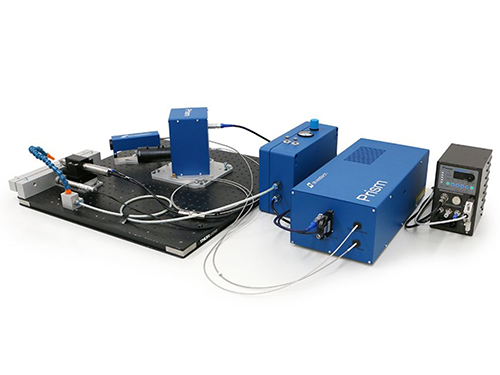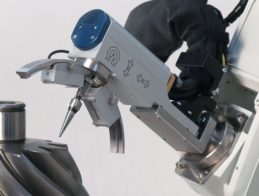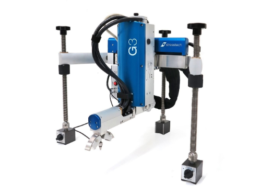STRESSTECH PRISM HOLE DRILLING SYSTEM
Prism residual stress is a measurement technology that dramatically improves the ability to make quick, accurate residual stress measurements.
Description
Prism residual stress is a measurement technology that dramatically improves the ability to make quick, accurate residual stress measurements. The technology utilizes stress-relaxation technique, where a small hole is drilled into the material thus relaxing the stress along the hole boundaries. The resulting surface distortion can then be measured precisely using electronic speckle pattern inter-ferometry system (ESPI).
A standard Prism system comprises:
- A computer and monitor for acquiring and viewing images of the part.
- A laser light source.
- Illumination and video heads, and
- A high-speed drill.
The system software fully integrates the hardware to provide automated data capture, and analysis of the resulting images. The software allows different levels of automation, including performing drilling and data acquisition for a complete stress depth profile fully automatically. The instrument is easy to set up and easy to operate. The measurements are highly accurate and fast.
Key Benefits:
- Fast: typical measurement and analysis in less than 5 minutes.
- High-resolution: monitor stress changes much less than 7 MPa.
- Customizable: Affordable solution designed specifically for your application.
- Accurate: more data with full field of view, real-time surface measurements.
- Non-contact: only requires direct visual path to part; no strain gauges to be applied.
- User friendly: easy-to-use Windows based software.
- Materials: includes materials difficult for XRD i.e., titanium and plastics; limited mainly by the ability to drill holes.
- Little Preparation: Clean measurement surface with low-reflectivity (may be spray painted).
Hole-drilling:
Hole-drilling is a residual stress measurement technique, where stressed material is removed by drilling a small blind hole into the component of interest. After the drilling sequence the remaining material at the vicinity of the hole spontaneously finds a new stress equilibrium. This re-arrangement of stresses leads to a slight distortion of the surface near the hole. Though the displacements are small, they are measurable and allow the calculation of the stresses that were present in the component prior to drilling.
The hole-drilling method is considered to be a semi-destructive measuring method, because the hole drilled may be negligibly small to the part performance.
Measurement Procedure:
The typical procedure starts with determining where the sample surface is relative to the drill bit tip. Prism detects the surface by an electrical contact method, where the drill moves towards the part until it starts cutting it. Alternatively, visual surface detection may be used. The user then sets a list of depths for the drilling and starts data acquisition. The individual drilling step is always performed automatically. Laser images of the surface are taken after each drilling step. One additional image is taken for defining hole position and image scale.
Prism Software:
The software integrates drilling and imaging. The user can perform measurements fully automatically for a list of depth increments set in advance, or control each step individually and change depths on-the-go. Image acquisition is automatic in the former case. Stress calculations are possible for any combination of the depths drilled, including as single-depth data. The data are output in graphical and in table form.
Prism stores its data in a Microsoft database. The user can organize measurements in folders and sub-folders within a database or within multiple databases. This allows easy and quick access to all the data. The software also allows review and modification of measurement parameters. Thus, calculations can be rerun quickly using modified values, if desired.
Stress results:
Stress values are calculated for the sample co-ordinate system – horizontal and vertical directions, and shear stress – and for the principal stress directions. For incremental hole-drilling non-uniform stress is assumed and the stresses are calculated using the integral method. Tikhonov regularization is optional.
References for hole-drilling in general:
- ASTM E837 – 08e1 Standard Test Method for Determining Residual Stresses by the Hole-Drilling Strain-Gage Method.
- Good Practice Guide No. 53 – The Measurement of Residual Stresses by the Incremental Hole-Drilling Technique, P V Grant, J D Lord and P S Whitehead, The National Physical Laboratory, UK.




